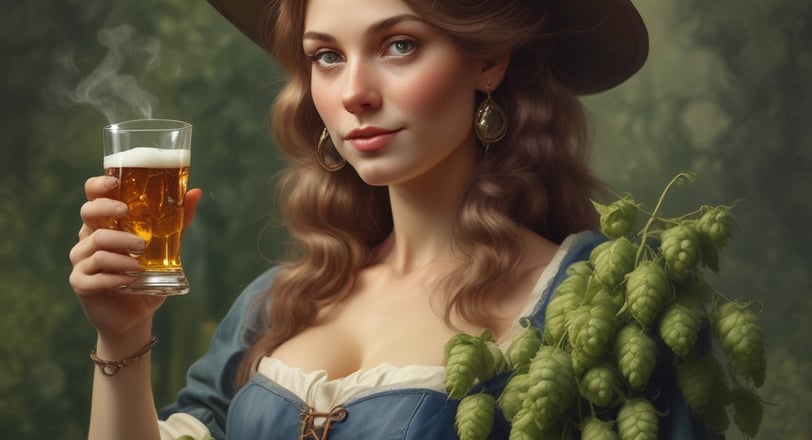The Dark History of Women, Witches, and Beer
Originally, women were the primary brewers, with evidence tracing back thousands of years. Over time, men took over the profession, especially with the rise of feudalism and food purity laws. During the Middle Ages, female brewers, or "brewsters," became associated with witches due to their knowledge of herbs and the unique imagery they adopted in taverns. The article also highlights how women are now reclaiming their place in the brewing industry, bringing back ancient traditions and restoring their essential role in beer production.
5/9/20253 min read


Millions of people around the world enjoy a good beer to relax after a long day. Beer is the third most consumed beverage in the world, behind only water and tea, and has been part of the human diet for at least 7,000 years. And while many of us may not be big fans of the drink itself, the study of its history is fascinating—especially during Women’s History Month, when we can recognize that beer production actually has deep roots in women’s work.
Women and Beer Brewing
In ancient times, brewing beer was an almost exclusively female practice. According to archaeologists who study fermentation, the division of labor in early societies placed women in charge of gathering ingredients and preparing beverages, while men focused on hunting. Evidence of beer production dates back to at least the fifth millennium BCE in what is now Iran, and the profession of “alewife” (a woman who brewed beer) is mentioned in the Epic of Gilgamesh, the oldest known literary work.
Early on, women dominated beer production throughout Mesopotamia, and this scenario persisted until the Roman Empire, when records show more men becoming involved in beer brewing in Egypt. In Northern Europe, women maintained an almost total monopoly on home beer production, particularly in Viking-era Scandinavia. However, with the rise of feudalism and shifts in social structure, women’s dominance in brewing declined during the Middle Ages.
The Role of Women in Monasteries
Even as beer production began to shift toward men, women continued to play important roles, especially within monasteries. The German nun and polymath Saint Hildegard of Bingen was one of the first to recommend the use of hops in beer brewing, highlighting its “healing, bittering, and preservative” properties—long before others made the same discovery.
Persecutions and the Dangerous Link to Witches
What started as a respected occupation for many women quickly turned into a dangerous one as witch hunts intensified across Europe. During the Middle Ages, “brewsters” (female brewers) used unusual methods of advertising. To stand out in crowded markets, it was common to wear tall, pointed hats and place brooms outside tavern doors to signal that the “brews” were ready. Bubbling cauldrons and six-pointed stars were also symbols associated with the quality of their beer. And since grain stores needed protection from rats, cats were kept in breweries—further reinforcing the association with witches.
From Beer Brewing to the Inquisition
Although the link between the image of witches and women brewers is clear, the reasons for it remain debated. Some historians suggest that as beer quality standards emerged in the 16th century, many women were pushed out of the market due to rising production costs. Over time, the beer industry became monopolized by men.
Moreover, women who possessed extensive knowledge of herbs and plants used to create healing and flavorful potions were particularly vulnerable to accusations of witchcraft during the height of the Inquisitions. Since beer brewing required this kind of expertise, it was easy to confuse an “alewife” with a witch—often without malicious intent.
Women Reclaiming the Beer Market
The exclusion of women from beer brewing in the West intensified with the implementation of the Beer Purity Law, which forced large-scale production and helped consolidate male-dominated beer industries. In 1540, the city of Chester banned women aged 14 to 40 from working as alewives, pushing beer production toward older women or eliminating them from the trade entirely.
Today, however, women are reclaiming their place in the beer industry. In some parts of Latin America and Africa, beer brewing still remains largely in the hands of women. Now, free from the fear of being burned as witches, they are once again taking on the role they held for centuries—reviving the traditions of their ancestors and brewing beer in a truly unique way.
Greenest's Conclusion
Women have always played a crucial role in beer production. And while the practice has been dominated by men in the West for centuries, the new wave of women returning to the beer industry is reviving a legacy lost to time. With the magic of hops in their hands, these women may once again create something truly enchanting in today’s breweries.
